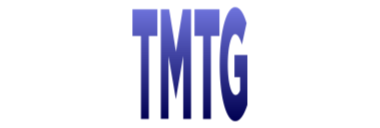ACR 2020: Lilly and Incyte Highlight Positive Data for Olumiant® in Rheumatoid Arthritis
Rhea-AI Summary
On November 2, 2020, Eli Lilly and Incyte announced positive long-term data for Olumiant (baricitinib) to be presented at ACR Convergence 2020. Key findings show that 27.5% of csDMARD-IR and 18.4% of bDMARD-IR patients achieved Low Disease Activity after 2.3 years. In a 5-year study, low rates of radiographic progression were maintained across various RA patient populations. No new safety concerns were identified, reinforcing Olumiant's long-term efficacy and safety for moderate to severe rheumatoid arthritis treatments.
Positive
- 27.5% of csDMARD-IR and 18.4% of bDMARD-IR patients achieved Low Disease Activity after 2.3 years.
- 85% and 86% of csDMARD-IR and bDMARD-IR patients maintained low disease activity at 2.3 years.
- Long-term studies showed low rates of radiographic progression in RA patients over 5 years.
- No new safety concerns with Olumiant identified in the presented studies.
Negative
- None.
News Market Reaction 1 Alert
On the day this news was published, INCY declined 2.54%, reflecting a moderate negative market reaction.
Data tracked by StockTitan Argus on the day of publication.
INDIANAPOLIS, Nov. 2, 2020 /PRNewswire/ -- Eli Lilly and Company (NYSE: LLY) and Incyte (NASDAQ: INCY) announced today positive data for Olumiant® (baricitinib) will be presented at ACR Convergence 2020, the American College of Rheumatology's virtual annual meeting taking place November 5-9, 2020. The Olumiant data being presented at this year's meeting include new long-term studies in adult patients living with rheumatoid arthritis (RA), along with real-world evidence (RWE) on safety and efficacy.
At this year's meeting, results from a post-hoc analysis evaluating the long-term efficacy of Olumiant for patients with active RA who were inadequate responders (IR) to conventional synthetic disease-modifying antirheumatic drugs (csDMARD) or biologic DMARDs (bDMARD) (Abstract #0224) will be shared. In this analysis,
"In this analysis of the long-term studies of Olumiant in adults with RA, the medicine demonstrated efficacy over more than two years as measured by the proportion of patients who achieved low disease activity," said Alvin Wells, M.D., Ph.D., director of the Aurora Rheumatology and Immunotherapy Center. "The safety and efficacy from this study helps support Olumiant 2-mg once daily as a long-term treatment for patients with moderate to severe RA."
Lilly will also highlight data from a long-term extension study that evaluated radiographic progression of structural joint damage in adult patients with active RA over 5 years of treatment with Olumiant (Abstract # 1235). The study enrolled patients who had completed treatment in one of three Phase 3 trials, including patients who were DMARD-naïve, csDMARD-IR and methotrexate (MTX)-IR, and assessed baricitinib 4-mg once daily as monotherapy or in combination with MTX or other csDMARDs and baricitinib 2-mg once daily in combination with other csDMARD. The data suggest that the different RA patient populations treated with baricitinib for up to 5 years can maintain low rates of radiographic progression, as assessed by the van der Heijde modified Total Sharp Score (mTSS).
"We are pleased with the data being presented at this year's virtual ACR meeting highlighting the depth of Lilly's immunology portfolio and the potential impact our medicines may have for patients," said Lotus Mallbris, M.D., Ph.D., vice president of immunology development at Lilly. "Furthermore, the data being showcased at this meeting demonstrate our commitment to ongoing evaluation of the long-term safety and efficacy of Olumiant in patients living with RA."
Additionally, Lilly will showcase RWE from a postmarketing safety surveillance study (Abstract # 0203). Results include 24-week safety data from 1,992 patients consecutively prescribed Olumiant in Japan. No new safety signals were observed during the initial analysis, and the study will continue to collect serious adverse events for three years.
An integrated safety analysis of pooled data from nine clinical trials of Olumiant is also being presented (Abstract # 0202). Across the trials, 3,770 patients with RA received Olumiant for a total of 13,148 patient-years of exposure with a median time on treatment of 4.2 years and up to a maximum of 8.4 years. The data reinforce the safety profile of Olumiant in the treatment of RA, with no new safety concerns reported in the analysis.
For more information about the Lilly data being presented at this year's virtual ACR, please visit https://www.rheumatology.org/Annual-Meeting.
Olumiant, an oral JAK1/JAK2 inhibitor discovered by Incyte, is developed by Lilly under license from Incyte.
Indication and Usage for OLUMIANT (baricitinib) tablets (in the United States) for RA patients
OLUMIANT® (baricitinib) 2-mg is indicated for the treatment of adult patients with moderately to severely active rheumatoid arthritis who have had an inadequate response to one or more tumor necrosis factor (TNF) antagonist therapies. Limitation of Use: Not recommended for use in combination with other JAK inhibitors, biologic disease-modifying antirheumatic drugs (DMARDs), or with potent immunosuppressants such as azathioprine and cyclosporine.
IMPORTANT SAFETY INFORMATION FOR OLUMIANT (baricitinib) TABLETS
WARNING: SERIOUS INFECTIONS, MALIGNANCY, AND THROMBOSIS
SERIOUS INFECTIONS: Patients treated with Olumiant are at risk for developing serious infections that may lead to hospitalization or death. Most patients who developed these infections were taking concomitant immunosuppressants such as methotrexate or corticosteroids. If a serious infection develops, interrupt Olumiant until the infection is controlled. Reported infections include:
- Active tuberculosis (TB), which may present with pulmonary or extrapulmonary disease. Test patients for latent TB before initiating Olumiant and during therapy. If positive, start treatment for latent infection prior to Olumiant use.
- Invasive fungal infections, including candidiasis and pneumocystosis. Patients with invasive fungal infections may present with disseminated, rather than localized, disease.
- Bacterial, viral, and other infections due to opportunistic pathogens.
Carefully consider the risks and benefits of Olumiant prior to initiating therapy in patients with chronic or recurrent infection.
Closely monitor patients for the development of signs and symptoms of infection during and after treatment with Olumiant including the possible development of TB in patients who tested negative for latent TB infection prior to initiating therapy.
MALIGNANCIES: Lymphoma and other malignancies have been observed in patients treated with Olumiant.
THROMBOSIS: Thrombosis, including deep venous thrombosis (DVT) and pulmonary embolism (PE), has been observed at an increased incidence in patients treated with Olumiant compared to placebo. In addition, there were cases of arterial thrombosis. Many of these adverse events were serious and some resulted in death. Patients with symptoms of thrombosis should be promptly evaluated.
WARNINGS AND PRECAUTIONS
SERIOUS INFECTIONS: The most common serious infections reported with Olumiant included pneumonia, herpes zoster and urinary tract infection. Among opportunistic infections, tuberculosis, multidermatomal herpes zoster, esophageal candidiasis, pneumocystosis, acute histoplasmosis, cryptococcosis, cytomegalovirus and BK virus were reported with Olumiant. Some patients have presented with disseminated rather than local disease and were often taking concomitant immunosuppressants such as methotrexate or corticosteroids. Avoid Olumiant in patients with an active, serious infection, including localized infections. Consider the risks and benefits of treatment prior to initiating Olumiant in patients:
- with chronic or recurrent infection
- who have been exposed to TB
- with a history of a serious or an opportunistic infection
- who have resided or traveled in areas of endemic tuberculosis or endemic mycoses; or
- with underlying conditions that may predispose them to infection.
Closely monitor patients for infections during and after Olumiant treatment. Interrupt Olumiant if a patient develops a serious infection, an opportunistic infection, or sepsis. Do not resume Olumiant until the infection is controlled.
Tuberculosis – Before initiating Olumiant evaluate and test patients for latent or active infection and treat patients with latent TB with standard antimycobacterial therapy. Olumiant should not be given to patients with active TB. Consider anti-TB therapy prior to initiating Olumiant in patients with a history of latent or active TB in whom an adequate course of treatment cannot be confirmed, and for patients with a negative test for latent TB but who have risk factors for TB infection. Monitor patients for TB during Olumiant treatment.
Viral Reactivation – Viral reactivation, including cases of herpes virus reactivation (e.g., herpes zoster), were reported in clinical studies with Olumiant. If a patient develops herpes zoster, interrupt Olumiant treatment until the episode resolves.
The impact of Olumiant on chronic viral hepatitis reactivation is unknown. Screen for viral hepatitis in accordance with clinical guidelines before initiating Olumiant.
MALIGNANCY AND LYMPHOPROLIFERATIVE DISORDERS: Malignancies were observed in Olumiant clinical studies. Consider the risks and benefits of Olumiant prior to initiating therapy in patients with a known malignancy other than a successfully treated non-melanoma skin cancer (NMSC) or when considering continuing Olumiant in patients who develop a malignancy. NMSCs were reported in patients treated with Olumiant. Periodic skin examination is recommended for patients who are at increased risk for skin cancer.
THROMBOSIS: Thrombosis, including DVT and PE, has been observed at an increased incidence in Olumiant-treated patients compared to placebo. In addition, arterial thrombosis events in the extremities have been reported in clinical studies with Olumiant. Many of these adverse events were serious and some resulted in death. There was no clear relationship between platelet count elevations and thrombotic events. Use Olumiant with caution in patients who may be at increased risk of thrombosis. If clinical features of DVT/PE or arterial thrombosis occur, evaluate patients promptly and treat appropriately.
GASTROINTESTINAL PERFORATIONS: Gastrointestinal perforations have been reported in Olumiant clinical studies, although the role of JAK inhibition in these events is not known. Use Olumiant with caution in patients who may be at increased risk for gastrointestinal perforation (e.g., patients with a history of diverticulitis). Promptly evaluate patients who present with new onset abdominal symptoms for early identification of gastrointestinal perforation.
LABORATORY ABNORMALITIES:
Neutropenia – Olumiant treatment was associated with an increased incidence of neutropenia (absolute neutrophil count [ANC] <1000 cells/mm3) compared to placebo. Avoid initiation or interrupt Olumiant treatment in patients with an ANC <1000 cells/mm3. Evaluate at baseline and thereafter according to routine patient management.
Lymphopenia – Absolute lymphocyte count (ALC) <500 cells/mm3 were reported in Olumiant clinical trials. Lymphocyte counts less than the lower limit of normal were associated with infection in patients treated with Olumiant, but not placebo. Avoid initiation or interrupt Olumiant treatment in patients with an ALC <500 cells/mm3. Evaluate at baseline and thereafter according to routine patient management.
Anemia – Decreases in hemoglobin levels to <8 g/dL were reported in Olumiant clinical trials. Avoid initiation or interrupt Olumiant treatment in patients with hemoglobin <8 g/dL. Evaluate at baseline and thereafter according to routine patient management.
Liver Enzyme Elevations – Olumiant treatment was associated with increased incidence of liver enzyme elevation compared to placebo. Increases of ALT ≥5x upper limit of normal (ULN) and increases of AST ≥10x ULN were observed in patients in Olumiant clinical trials.
Evaluate at baseline and thereafter according to routine patient management. Promptly investigate the cause of liver enzyme elevation to identify potential cases of drug-induced liver injury. If increases in ALT or AST are observed and drug-induced liver injury is suspected, interrupt Olumiant until this diagnosis is excluded.
Lipid Elevations – Treatment with Olumiant was associated with increases in lipid parameters, including total cholesterol, low-density lipoprotein cholesterol and high-density lipoprotein cholesterol. Assess lipid parameters approximately 12 weeks following Olumiant initiation. Manage patients according to clinical guidelines for the management of hyperlipidemia.
VACCINATIONS: Avoid use of live vaccines with Olumiant. Update immunizations in agreement with current immunization guidelines prior to initiating Olumiant therapy.
HYPERSENSITIVITY: Reactions such as angioedema, urticaria, and rash that may reflect drug sensitivity have been observed in patients receiving Olumiant, including serious reactions. If a serious hypersensitivity reaction occurs, promptly discontinue Olumiant while evaluating the potential causes of the reaction.
ADVERSE REACTIONS
Most common adverse reactions include: upper respiratory tract infections (
USE IN SPECIFIC POPULATIONS
PREGNANCY AND LACTATION: No information is available to support the use of Olumiant in pregnancy or lactation. Advise women not to breastfeed during treatment with Olumiant.
HEPATIC AND RENAL IMPAIRMENT: Olumiant is not recommended in patients with severe hepatic impairment or in patients with severe renal impairment.
Please click to access full Prescribing Information, including Boxed Warning about Serious infections, Malignancies, and Thrombosis, and Medication Guide.
BA HCP ISI 09JUL2020
About OLUMIANT®
OLUMIANT is a once-daily, oral JAK inhibitor approved in the U.S. for the treatment of adults with moderately- to severely active rheumatoid arthritis who have had an inadequate response to one or more TNF inhibitor therapies, and approved outside of the U.S. for patients with moderately- to severely active rheumatoid arthritis who have had an inadequate response to one or more DMARDs.1 There are four known JAK enzymes: JAK1, JAK2, JAK3 and TYK2. JAK-dependent cytokines have been implicated in the pathogenesis of a number of inflammatory and autoimmune diseases.2 OLUMIANT has greater inhibitory potency at JAK1, JAK2 and TYK2 relative to JAK3; however, the relevance of inhibition of specific JAK enzymes to therapeutic effectiveness is not currently known.1 OLUMIANT is approved in more than 70 countries.
In December 2009, Lilly and Incyte announced an exclusive worldwide license and collaboration agreement for the development and commercialization of baricitinib and certain follow-on compounds for patients with inflammatory and autoimmune diseases.
About Lilly in Immunology
Lilly is bringing our heritage of championing groundbreaking, novel science to immunology and is driven to change what's possible for people living with autoimmune diseases. There are still significant unmet needs, as well as personal and societal costs, for people living with a variety of autoimmune diseases and our goal is to minimize the burden of disease. Lilly is investing in leading-edge clinical approaches across its immunology portfolio in hopes of transforming the autoimmune disease treatment experience. We've built a deep pipeline and are focused on advancing cutting edge science to find new treatments that offer meaningful improvements to support the people and the communities we serve.
About Eli Lilly and Company
Lilly is a global health care leader that unites caring with discovery to create medicines that make life better for people around the world. We were founded more than a century ago by a man committed to creating high-quality medicines that meet real needs, and today we remain true to that mission in all our work. Across the globe, Lilly employees work to discover and bring life-changing medicines to those who need them, improve the understanding and management of disease, and give back to communities through philanthropy and volunteerism. To learn more about Lilly, please visit us at lilly.com and lilly.com/newsroom. P-LLY
About Incyte
Incyte is a Wilmington, Delaware-based, global biopharmaceutical company focused on finding solutions for serious unmet medical needs through the discovery, development and commercialization of proprietary therapeutics. For additional information on Incyte, please visit Incyte.com and follow @Incyte.
This press release contains forward-looking statements (as that term is defined in the Private Securities Litigation Reform Act of 1995) about OLUMIANT (baricitinib) as a treatment for patients with rheumatoid arthritis reflects Lilly's and Incyte's current beliefs. However, as with any pharmaceutical product, there are substantial risks and uncertainties in the process of development and commercialization. Among other things, there can be no guarantee the future study results will be consistent with the results to date, that OLUMIANT will receive additional regulatory approvals, or that it will be commercially successful. For further discussion of these and other risks and uncertainties, see Lilly's and Incyte's most recent respective Form 10-K and Form 10-Q filings with the United States Securities and Exchange Commission. Except as required by law, Lilly and Incyte undertake no duty to update forward-looking statements to reflect events after the date of this release.
1 Olumiant Prescribing Information, 2020.
2 Walker JG and Smith MD. J Rheumatol. 2005;32;1650-1653.
Kristen Porter Basu, basu_kristen_porter@lilly.com; 317-447-2199 (media)
Kevin Hern; hern_kevin_r@lilly.com; 317-277-1838 (investors)
Catalina Loveman; cloveman@incyte.com; +1-302-498-6171 (Incyte media)
Michael Booth, DPhil; mbooth@incyte.com; +1-302-498-5914 (Incyte investors)
![]() View original content to download multimedia:http://www.prnewswire.com/news-releases/acr-2020-lilly-and-incyte-highlight-positive-data-for-olumiant-in-rheumatoid-arthritis-301164307.html
View original content to download multimedia:http://www.prnewswire.com/news-releases/acr-2020-lilly-and-incyte-highlight-positive-data-for-olumiant-in-rheumatoid-arthritis-301164307.html
SOURCE Eli Lilly and Company








